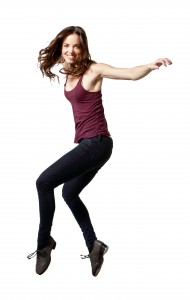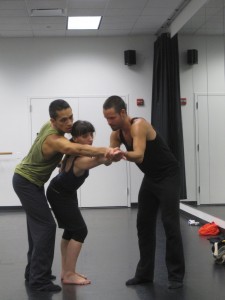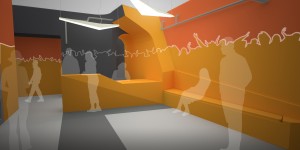This weekend, Feb. 8-10, shake, hop and shuffle off your winter blues by attending the Winter Tap JAMboree! presented by the Chicago Human Rhythm Project (CHRP). Located at the American Rhythm Center (ARC) in the historic Fine Arts Building on Michigan Ave., the three-day fest features some of the best tappers around including CHRP Director Lane Alexander, Nico Rubio, Bril Barrett, STOMP performer Lisa La Touche and Michelle Dorrance, winner of a 2012 Princess Grace Award (the first tap choreographer to ever win!). Master classes in tap will be offered, plus classes in hip hop, break dancing, fitness and tai chi, plus an open forum discussion about the future of American tap dance. General registration $15. Master classes $17.50/per class. Also, on Saturday, Feb. 9 from 7-9 pm, there will be auditions for tap scholarships for dancers ages 12 – 18 to CHRP’s Rhythm World tap festival this summer, July 22 – Aug. 4. Ten $1000 scholarships will be awarded. Registration fee is $15. For more information, visit chicagotap.org.
While Dorrance is in town for the JAMboree!, she’s also working with CHRP group BAM! setting a new work to be premiered on April 4th at the Auditorium Theatre‘s Music + Movement Festival. The new five-month-long festival – just announced yesterday – features Chicago dance companies paired with live musicians for original performances commission by the theater. BAM! will perform in the Katten/Landau Studio (435 S. Wabash, 4th floor). Tickets are $10.
I sat in on rehearsals this morning while Dorrance finished piecing together the first section set to a remixed version of Etta James’ St. Louis Blues for five dancers. Fast is an understatement for the rapid-fire rhythms coming off their feet. Dorrance, 33, tosses out commentary with a humorous tone (this really mattered to me last night; did I lie to you?; this shit…let’s clean it up while we’re here) and advice (trust it and try it; stay in plié, it will save your life; surprise yourself with the first over-the-top) while going over choreographic notes and layering in bits of character to the complicated syncopated steps. Familiar names like wings and Charleston are interspersed with audible rhythmic cues like shig-a-dig-a and go-go-go-go GA-GA! The first section is short, but jam-packed with steps, which leads Dorrance to apologize, sort of, for adding in old-school trenches (switching legs back in a flat back, reaching to the floor with the opposite hands, while sliding back on the outside of one foot) at the very end. “Sorry to end this so tiring…hmph!” But, she doesn’t change it.



